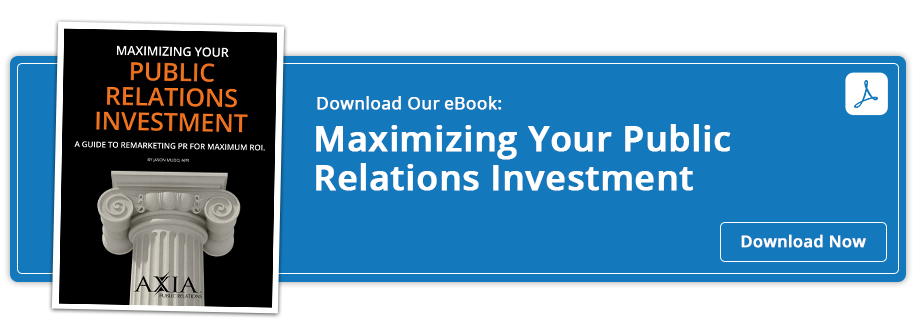Take a minute to think about the best stories you’ve heard in your life – the ones that made you laugh out loud, brought tears to your eyes or elicited a happy sigh after reaching the end. What is it about storytelling that evokes these emotional responses and causes us to remember them for years on end? I know I can recall details of family trips, Grandma’s famous recipes and Grandpa’s scariest yarns. Storytelling utilizes a specific formula to entice us to pay closer attention, and the stories that make the deepest impact are the ones that resonate most personally with each of us.
If you’re like me, you don’t enjoy being barraged by emails, advertisements, banners or sales people pushing you to CLICK HERE or PURCHASE NOW! It’s emotional calls to action that cause us to make decisions. It’s literally that simple, and we’re all active participants.
Say you’re in the market for a new car. Don’t you begin to notice different makes of cars on the road or pay closer attention to advertisements from dealerships on the radio? Of course you do. You have become a captive audience for a group of businesses that are attempting to elicit an emotional response from you through their commercials, ads and products. Sales people use this tactic equally as often – especially when sharing “personal experiences” with particular products or brands. After telling you how positively their own mothers feel about a brand of dishwasher, you instantly feel more positive about that brand. In the end, stories sell.
The psychology behind storytelling is basic and primal. People have always loved stories and, since the first cave paintings debuted 40,000 years ago, storytelling has been used as a fundamental means of communication. From a scientific standpoint, our brains are hardwired to an active, engaged listening state when we tell or listen to stories. Consider your favorite daytime soap opera or evening drama. Why are you compelled to watch? How about a popular book that nearly everyone is reading? The main reason is because the storyline shared through the plot and characters resonates with you in some way.
Public relations professionals are known to be expert storytellers, trained not only in the art of storytelling, but also in the science of creating truly compelling stories. They know the buttons to push and the emotions to evoke and can expertly arrange adjectives and verbs so that even without really knowing it, you are instantaneously in love with what they are peddling. But there are secrets and methods to telling great stories, including:
Craft stories customers can relate to on an emotional level.
When mingling with a group of complete strangers, isn’t it amazing that after only brief interaction, many can find things in common, related past experiences or even people in common? Most people have a few stories to share which include how they know the common person or even what brought them to the event. We are all vested in engagement at this point, so we listen.
But watch the people in the room who are surrounded by the largest crowds. They are often weaving wonderfully exciting tales (tall or otherwise) that are keeping a number of people engaged at the same time. When we listen to a story, not only are the language processing parts of our brains activated, but also emotional areas that would activate were we actually experiencing the events of the story unfolding. The most exciting storytellers are often the most busy, as they are sharing information that elicits an emotional memory or response from listeners.
Businesses, too, can leverage this strategy by sharing information about themselves and their products in a thoughtful, persuasive manner. Think about leading consumer brands and how they market their wares with slogans and images that lead us to believe we must have their products – now! They are simply telling stories, and visual stories are becoming increasingly more popular, courtesy of the digital age and the rapid movement of information. That’s where viral videos come from.
Story lines should clearly and concisely explain the value of your product/service.
Whenever we hear a story, we want to relate it to one of our existing experiences. Again, good storytelling evokes emotions and calls listeners to action. The easiest way to outline this is through an example:
If your company sells an amazing product that helps to calm colicky babies, you might try, “This product is so amazing it will calm your colickly baby.”
Or you could instead say, “Mom and Dad, put those sleepless nights in your rear view mirror with our calming baby binky. Guaranteed to have your colicky baby resting comfortably – so you can, too.”
Note the subtle differences and the placement of particular words that immediately elicit an emotional response as well as an image in our minds as it concisely outlines the result should you use this particular product – and it was done in fewer than 30 words. Remember, the end goal of storytelling is to get the reader to take action, so the more concise you are, the quicker the response will be.
Less is more: Make your stories easy to remember.
For any of the personal stories you recalled when asked to earlier in this post, were any of those stories very long? Probably not, and here’s why: When we think of the best stories, they aren’t complex or extremely detailed; they’re simple. The more simple the story, the more likely it will stick. Attempting to recount a detailed story with multiple characters and sprawling plotlines is extremely difficult. Remember those games of Telephone you played as a kid? That game itself was one of our first examples of how slight misinformation can make a huge difference in a story. But tell a dramatic, content-rich short story and everyone is hooked.
“I often think about The Godfather and the story Michael Corleone shares with his girlfriend about how instrumental Luca Brasi was in helping Vito Corelone’s godson Johnny Fontane. Michael explains that his father, Vito, visited bandleader Les Halley to offer $10,000 to release Fontane from a personal service contract that was holding back Fontane’s singing career. When the bandleader refused, Vito returned the next day with Luca Brasi and a $1,000 offer, and assured the bandleader that either his brains or his signature would be on the contract.”
That very brief story takes only a few seconds to tell, yet anyone who hears it can immediately understand what happened and the emotional impact each character felt – a perfect example of deeply powerful storytelling.
Avoid buzzwords and industry jargon.
Great storytellers are successful at sharing content-rich tales in small snippets – each of which emotionally resonates and is easy to recall. Those two elements – content-rich and brief – are critical when crafting memorable stories. Additionally, avoid popular buzzwords and phrases. Too often, businesses jump on the “buzzword bandwagon” and use trendy industry words. This is actually a poor storytelling strategy, as scientists have discovered that our brains automatically treat overused words and phrases as simply meaningless.
So the next time you seek to popularize something trendy, avoid the jargon and focus instead on how it will impact your end customer. Using simple, heartfelt language in concert with low complexity is the optimal equation to activate the brain regions that make us more aware and engaged. To prove this to yourself, the next time you struggle with getting someone (or many people) on board with an idea, simply tell a story illustrating the outcome you had in mind. The results may surprise you.
Axia’s team of creative storytellers has developed unique stories about and for clients for years. If you or your company has a story to share but need help crafting the right story to sell, contact the Axia PR team at 888-PR-FIRM-8.
 – Jason Mudd, APR, is CEO of Axia Public Relations. He is an Emmy Award-winning accredited public relations practitioner, speaker, author and entrepreneur. His public relations portfolio includes work for established national and emerging brands such as American Airlines, Budweiser, Dave & Buster’s, Brightway, Florida Blue, H&R Block, Hilton, HP, Miller Lite, New York Life, Pizza Hut, Ray Charles, Southern Comfort, Verizon and more. Connect with Jason on Twitter @jasonmudd9 and Axia Public Relations @axiapr. Be sure to tweet and share your thoughts below. We’ll read and respond to each of them.
– Jason Mudd, APR, is CEO of Axia Public Relations. He is an Emmy Award-winning accredited public relations practitioner, speaker, author and entrepreneur. His public relations portfolio includes work for established national and emerging brands such as American Airlines, Budweiser, Dave & Buster’s, Brightway, Florida Blue, H&R Block, Hilton, HP, Miller Lite, New York Life, Pizza Hut, Ray Charles, Southern Comfort, Verizon and more. Connect with Jason on Twitter @jasonmudd9 and Axia Public Relations @axiapr. Be sure to tweet and share your thoughts below. We’ll read and respond to each of them.
Topics: public relations



Comment on This Article